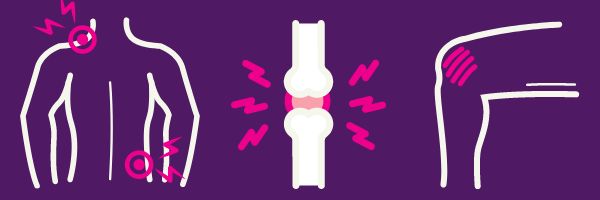
Arthritis is on the rise in the US and is likely to continue to climb as the baby boomer generation ages. It is actually one of the main causes of disability and affects an estimated 50 million adults and 300,000 children in America, according to the Arthritis Foundation. (1) (2)
Arthritis causes inflammation of one joint or multiple joints and is usually more common in women than men and in those who are overweight. Symptoms tend to develop over time, but for some, they may also appear suddenly and include:
- Stiffness
- Swelling
- Pain in the joints
Types of Arthritis
Arthritis is actually a term associated with a complex group of more than 100 conditions that affect the joints, tissues around the joint, and other connective tissues. (3)
Among the most prevalent are:
Osteoarthritis – the most common type of arthritis and it is usually caused by normal wear and tear on the joints which in turn causes a natural breakdown of cartilage tissue. Knees, hips, and hands are particularly vulnerable to developing OA.
Rheumatoid Arthritis – an autoimmune disorder that occurs when the body’s immune system attacks the synovium, a soft tissue in joints that produces a fluid that nourishes the cartilage and lubricates the joints. In time, RA can eventually lead to the destruction of both bone and cartilage inside the joint. It can affect any joint in your body, but it is most commonly found in the wrist, hands, and fingers.
Psoriatic Arthritis – also an autoimmune disease that manifests in similar ways to rheumatoid arthritis with the main difference being the skin can be involved, causing nail changes, skin rashes, along with swelling and tenderness in fingers and feet.
Juvenile Arthritis – an umbrella term to describe the inflammatory and rheumatic diseases that develop in children under the age of 16. The most common form is Juvenile idiopathic arthritis formerly known as juvenile rheumatoid arthritis, which can cause persistent joint pain, swelling and stiffness.
Managing/Treating Arthritis
The main goal of treatment is to reduce pain and prevent additional damage to the joints. (4) (5)
Medications
- Analgesics, such as hydrocodone or acetaminophen, are effective for pain, but don’t help decrease inflammation.
- Nonsteroidal anti-inflammatory drugs (NSAIDs), such as ibuprofen and salicylates, help control pain and inflammation.
- Menthol or capsaicin creams may block the pain signals from your joints.
- Immunosuppressants like prednisone or cortisone help reduce inflammation.
- For RA, corticosteroids or disease-modifying antirheumatic drugs (DMARDs) may be used to suppress the immune system from attacking itself.
Taking Personal Charge
- Weight loss and maintaining a healthy weight can especially reduce the risk of developing OA and can reduce symptoms if you already have it. (5)
- Eating a healthy diet as free of fried foods, processed foods, dairy products, red meat, and gluten as possible can help reduce inflammation, promote weight loss, and slow disease progression.
- Regular exercise will keep joints flexible and enhances mood.
While there’s no cure for arthritis, the right treatment along with lifestyle changes can greatly reduce your symptoms.
https://www.ncbi.nlm.nih.gov/pmc/articles/PMC5479046/
https://www.arthritis.org/home
https://curearthritis.org/arthritis-types/
https://www.ncbi.nlm.nih.gov/pmc/articles/PMC2603303/
https://www.cdc.gov/arthritis/pain/index.htm
https://www.ncbi.nlm.nih.gov/pmc/articles/PMC5682732/



